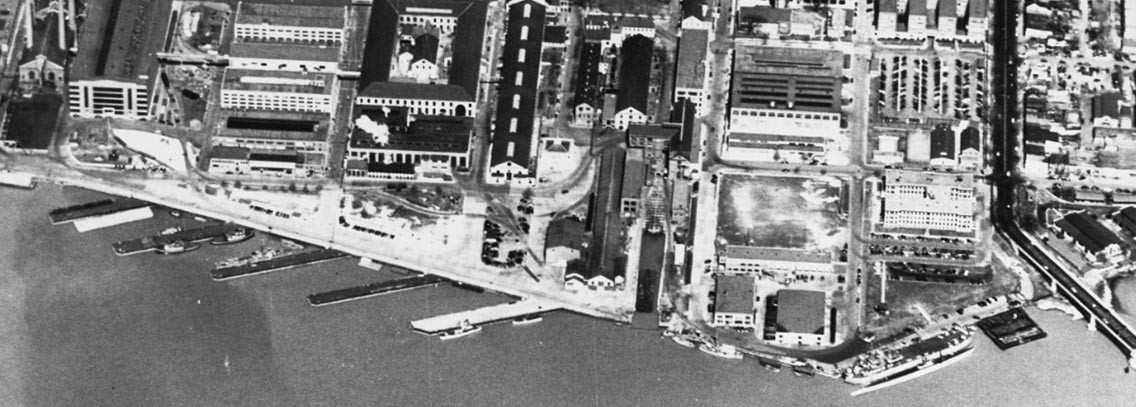
1940-1961
1940-1961
An increase of employees and production for World War II brought an expansion of the Washington Navy Yard westward to First Street. Despite the Potomac River Flood of 1942, an increase of ordnance manufacturing, innovative tests with weapons technology, and a wide-variety of training for Sailors began. The employment of civilian women grew due to the draft and Women Accepted for Volunteer Emergency Services (WAVES) replaced the male sailors ordered for sea and overseas duty. When the Japanese surrendered onboard the battleship Missouri (BB-63), a bronze plaque manufactured at the Naval Gun Factory was affixed to the spot of surrender. Replacing Presidential yacht Potomac in November 1945, USS Williamsburg (AGC-369) was utilized by Presidents Harry S. Truman and Dwight D. Eisenhower, though Eisenhower ordered the ship decommissioned after one use in 1954.
On 1 December 1945, Secretary of the Navy James V. Forrestal formally changed the name of the Washington Navy Yard to the Naval Gun Factory, though post-World War II saw a decrease of production due to aircraft carriers and guided missile production. As with the Unknown Soldier from WWI, the Unknown Servicemen from WWII and Korea were also initially transported to the Washington Navy Yard in April 1958 by USS Boston (CAG-1) and USS Canberra (CAG-2) before internment in Arlington National Cemetery. Adapting to make guided missiles, the Navy changed the Naval Gun Factory’s name to the United States Naval Weapons Plant in 1959. Despite the name change, it reverted back to the Washington Navy Yard in 1962 when production ceased, ending a 114-year tradition of ordnance manufacture.
Changing to an administrative center, numerous international leaders and foreign military leaders were hosted at the Yard. Chief of Naval Operations Admiral Arleigh Burke recognized the historical influence of the location. Persuading Secretary of the Navy John B. Connally, the U.S. Naval Historical Display Center was approved in 1961 and located in Building 76. The title of the Display Center has been changed numerous times. First to the U.S. Navy Memorial Museum then to the Navy Museum and finally to the National Museum of the U.S. Navy. Also during this time, President John F. Kennedy utilized the Secretary of the Navy’s yacht Sequoia and frequently used the vessel at the Yard to host foreign dignitaries.
Image: NH 91943: Naval Gun Factory, Washington Navy Yard, District of Columbia. View of the Navy Yard and its vicinity, looking north from over the Anacostia River, 1949. U.S. Naval History and Heritage Command Photograph.



